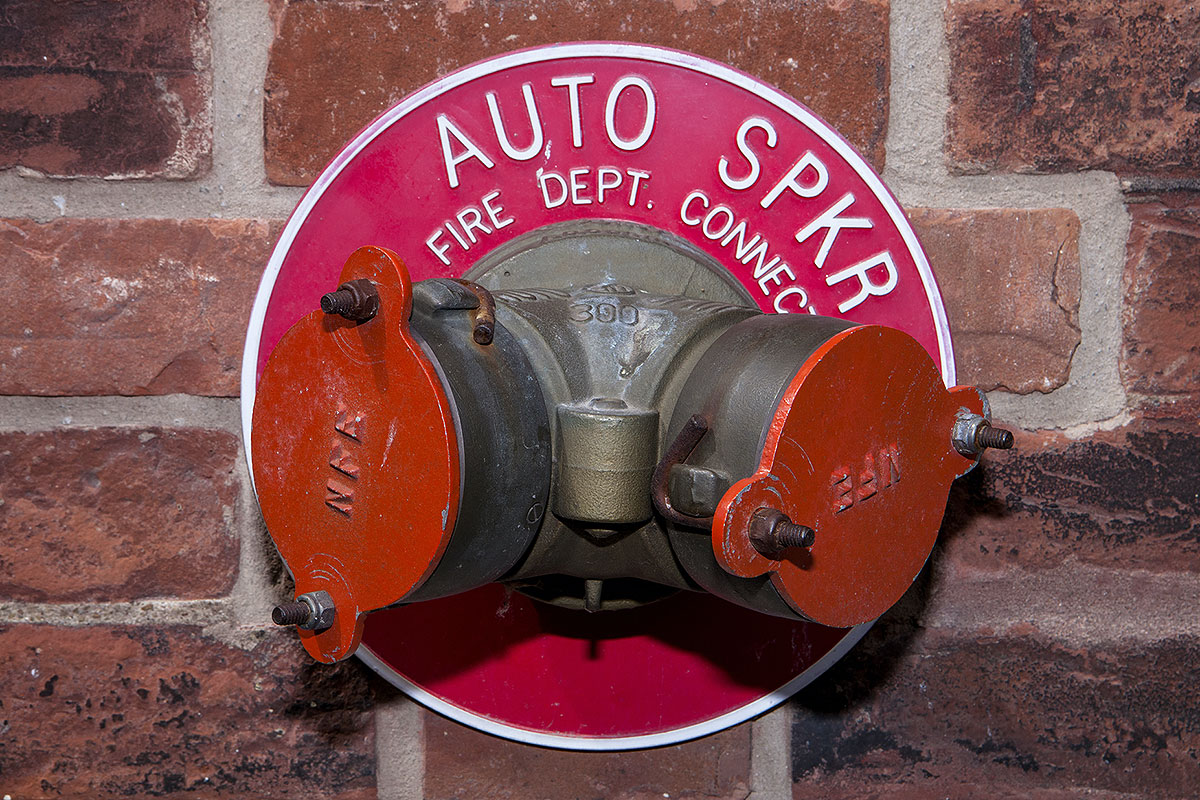
Risk Insights
The Importance of a Fire Department Connection for Your Sprinkler System
Any business owner will tell you an effective sprinkler system is without question the best first line of defense should a workplace fire occur. But a sprinkler system alone is only part of the fire protection picture. An equally important addition that every sprinkler system should have is something not every business owner is familiar with – a fire department connection (FDC).
Having an FDC at your place of business can allow your local fire department to pump additional water into the property’s existing sprinkler system during a fire, suppressing the flames to more manageable levels before physically entering the building to finish the job. National Fire Protection Association (NFPA) standards require FDCs on all sprinkler systems (NFPA 13) and standpipe systems (NFPA 14).
How FDCs Work
Although sprinkler systems can kickstart the fire suppression process, such systems’ water supplies and pressure levels can vary. An FDC can serve as an external connection to a property’s sprinkler system. When a fire occurs, this connection—which consists of an inlet and piping system—can be utilized by the impacted building’s local fire department to rapidly suppress the flames with an additional water supply and heightened pressure, increasing firefighters’ ability to get the fire under control.
To accomplish this, the fire department connects a hose line from the fire engine to the FDC and pumps extra water into the building’s sprinkler system, thus providing an adequate amount of water pressure to mitigate the flames in a timely, efficient manner.
FDCs are typically located on the outside of the property they protect, but can sometimes be completely separated from the building altogether. Such FDCs are known as freestanding or sidewalk FDCs. In any case, NFPA 13 requires FDCs to be located on the street side of the property (if possible).
Apart from location, FDCs should also be clearly labeled with proper signage that states what type of system the connection supplies (standpipe system or sprinkler system), the level of water pressure that the connection requires and whether the connection supplies just a portion or the entirety of the building.
Most sprinkler systems have an FDC with two inlets. However, depending on both the size of the premises and sprinkler system risers within the building, a property may need additional inlets. Be sure to review applicable fire codes, as well as consult your community’s fire department to determine your property’s specific FDC requirements.
Keeping Your Property’s FDC in Good Condition
Without proper care and maintenance measures in place, FDCs can easily become blocked, plugged, clogged or otherwise damaged—making the connection difficult to locate or potentially unusable in the event of a fire. The following tips will help you maintain your FDC:
- Only allow FDC design, installation and repairs to be conducted by a qualified contractor.
- Ensure your FDC has proper signage that is securely placed and easy to read. Clean this signage regularly.
- Make sure the FDC is clearly visible and accessible. Keep the connection from being blocked by landscaping features, equipment or other structures.
- Implement measures to prevent the FDC from getting plugged or clogged by various forms of debris (e.g., dirt, grass, rocks, sticks or animal nests). Have the FDC flushed every five years to remove any blockages.
- Keep the FDC’s cover secure at all times. If the cover must be opened with a specific tool, ensure the fire department has access to this tool.
- If applicable, take steps to protect the FDC from being damaged by potential vehicle collisions (e.g., establishing clear traffic routes and installing a barrier around the FDC to minimize the impact of a collision incident).
- Schedule regular hydrostatic tests for the FDC to verify connection strength and detect any leaks.
- Inspect the FDC on a quarterly basis for potential damages, clogs or blockages. Have repairs done as needed.
In addition to these maintenance tips, make sure you reach out to your local fire department and invite them to your property to review your FDC. During this visit, the fire department can familiarize itself with the location of your building’s FDC and conduct a visual inspection of the connection to ensure everything is in good condition.
Talk to a Risk Management Expert
VTC Insurance Group is committed to helping you safeguard your business. To learn more about fire protection, contact a VTC agent near you. Call 248.828.3377 or visit vtcins.com.
The content within this blog is for informational purposes only and is not intended as legal advice.


